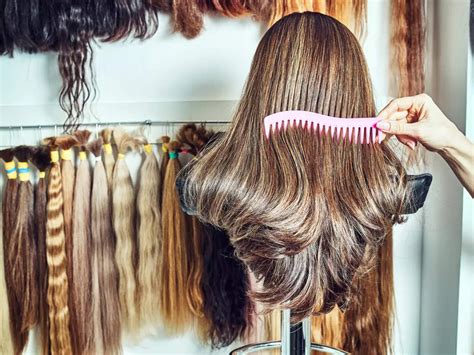Alopecia, a condition that causes hair loss, can be a distressing experience. But with today’s advanced wig technology, you can regain your confidence and embrace your unique beauty. Here’s a comprehensive guide to wigs for alopecia:

Understanding Wigs for Alopecia
Wigs, also known as hair prostheses or cranial prosthetics, are artificial hairpieces designed to cover hair loss. They are a non-surgical solution that offers immediate coverage and allows you to manage your alopecia without compromising your appearance.
Types of Alopecia
Alopecia comes in various forms, including:
- Androgenetic alopecia: Genetic hair loss, common in both men and women
- Alopecia areata: An autoimmune disorder that causes round patches of hair loss
- Telogen effluvium: Temporary hair loss due to stress, illness, or certain medications
- Anagen effluvium: Severe hair loss caused by chemotherapy or radiation
Choosing the Right Wig
Selecting the perfect wig for alopecia requires meticulous consideration. Here’s a step-by-step guide:
1. Determine Your Hair Type and Skin Tone:
Consider your natural hair color, texture, and density. Match the wig to your hair characteristics to achieve a seamless and natural appearance. Choose a wig with a breathable cap construction that complements your skin tone.
2. Select the Right Cap:
Wigs come with various cap constructions, including:
- Mono wigs: Hand-tied monofilament caps allow for a realistic scalp illusion
- Lace wigs: Made with delicate lace, these wigs offer a secure and comfortable fit
- Weft wigs: Traditional wigs constructed with machine-sewn wefts
3. Consider Your Budget:
Wigs for alopecia can range in price depending on the type of wig, materials used, and customization options. Set a budget and explore options that fit within your financial constraints.
4. Consult with a Hair Stylist or Wig Specialist:
A professional can guide you in choosing the right wig and provide valuable advice on styling and maintenance.
Wearing Your Wig
Once you have your wig, it’s time to wear it with confidence:
1. Apply Wig Adhesive:
For secure hold, use a wig adhesive or glue formulated specifically for wig wearers. Follow the manufacturer’s instructions carefully.
2. Position the Wig:
Gently place the wig on your head and adjust the positioning until it feels comfortable and looks natural.
3. Style the Wig:
Use a wide-tooth comb or wig brush to style your wig. Avoid using heat styling tools, as they can damage the artificial fibers.
Maintaining Your Wig
Proper maintenance is crucial for the longevity and hygiene of your wig:
1. Wash and Condition:
Regularly wash your wig with a sulfate-free wig shampoo and conditioner designed for synthetic or human hair wigs. Use lukewarm water and avoid excessive rubbing.
2. Deep Condition:
Treat your wig with a deep conditioner every few weeks to restore moisture and prevent dryness.
3. Store Properly:
When not in use, store your wig on a wig stand in a cool, dry place to maintain its shape and prevent tangling.
4. Consult with a Hair Stylist:
Schedule regular appointments with a hair stylist or wig specialist for professional cleaning, maintenance, and style updates.
Special Considerations for Alopecia Wigs
1. Medical Insurance Coverage:
Check with your insurance provider if your alopecia diagnosis qualifies for wig coverage. Many insurance plans offer reimbursement or partial coverage.
2. Emotional Support:
Wearing a wig for alopecia can be an emotional journey. Seek support from family, friends, or support groups to navigate the challenges and celebrate your beauty.
Frequently Asked Questions
1. What is the difference between synthetic and human hair wigs?
Synthetic wigs are made from artificial fibers, while human hair wigs are made from real human hair. Human hair wigs offer a more natural look and feel, but they are more expensive and require more maintenance.
2. How long will my wig last?
The lifespan of a wig depends on the type of wig, materials used, and maintenance practices. Properly maintained wigs can last for several years.
3. Can I style my wig with heat tools?
Avoid using heat styling tools on synthetic wigs, as they can damage the fibers. Human hair wigs can be styled with heat, but use a low heat setting and apply heat protectant spray to prevent damage.
4. How often should I wash my wig?
Wash your wig every 7-14 days, or more frequently if you wear it daily. Over-washing can damage the wig’s fibers.
Conclusion
Wigs for alopecia are a versatile and empowering solution for managing hair loss. By understanding the different types of wigs, choosing the right one for your needs, and maintaining it properly, you can regain your confidence and embrace your unique beauty. Remember that you are not alone, and with the right support and resources, you can navigate the challenges of alopecia and live a full and fulfilling life.
